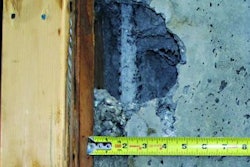WASHINGTON, D.C. - Following declines in new business volume in 2008 and 2009, the equipment finance industry began to regain volume in 2010, according to the 2011 Survey of Equipment Finance Activity (SEFA) released today by the Equipment Leasing and Finance Association. The survey reported an overall 3.9% increase in volume in 2010, compared to a significant 30.3% decline reported in 2009 and a 2.2% decline reported in 2008. The SEFA, which is based on responses from 108 ELFA member companies, covers key statistical, financial and operations information for the $521 billion equipment finance industry.
"Through 2010, the equipment finance industry showed gradual but steady growth," said William G. Sutton, ELFA President and CEO. "Although uncertainty about the broader economy continues, more recent data collected in the first two quarters of 2011 suggests the trend toward an improved equipment finance industry is continuing."
Survey Highlights
Key findings for 2010 as reported in the 2011 SEFA include:
- New business volume varied by respondent.Although total new business volume increased by a moderate 3.9%, just under half of the survey respondents experienced an increase in volume between 2009 and 2010.
- By market segment: All market segments showed growth in volume, except for the small-ticket segment, which saw a contraction in volume.
- By organization type: Captive equipment finance organizations saw the strongest increase in new business volume (11.3%). Independents saw their volume grow by 5.2%, reversing their significant 46.3% decrease in volume reported in the 2010 SEFA. Banks saw a slight decline (0.9%) in volume.
- From an asset perspective, agriculture, trucks and trailers, and medical imaging/ electronic devices saw increases in new business volume, while construction, energy and printing saw decreases. The categories with the biggest increases in new business volume were state and local government; mining/oil and gas extraction; federal government; agriculture, forestry and fishing; and arts/entertainment/recreation.
- Pre-tax income and net income regained healthy margins. Though revenues decreased slightly in dollar terms by 0.5%, pre-tax income reached 29.2% of adjusted revenue and net income was 21% of adjusted revenues, levels last seen in 2007 and 2006.
- ROA and ROE were up. Financial measures such as return on average assets (ROA) returned to levels last seen in 2006, while return on average equity (ROE) showed a robust leap to 22.1%. Note that the average ROE reported by the survey between 2001 and 2009 never rose above 15%.
- Total headcount decreased moderately, by 3.3%.
- Delinquencies and full-year losses (charge-offs) declined, following overall economic trends hinting of economic recovery.
- There were continued signs of improved business conditions. In 2010, cost of funds continued to drop for the third year, and though pre-tax spreads declined in 2010 compared to 2009, they were stronger than spreads were between 2005 and 2008. While overall headcount decreased, employment did grow in the business development, credit approval and syndication areas, while positions in the account services area declined. Efforts in asset remarketing are also a focus, with sharp increases in staffing levels.
About the Survey
The SEFA is the broadest compendium of industry data, comprising a representative cross-section of equipment lease and loan origination by product, structure and origination. It provides a baseline and benchmark for companies operating in the equipment finance space through a voluntary survey of ELFA member companies.
PricewaterhouseCoopers LLP managed the 2011 SEFA. The results were compiled from surveys sent to 330 eligible ELFA members in the first quarter of 2011. A total of 114 members representing 108 companies submitted 2010 U.S. domestic lease and loan data. Of the 2011 respondents, 84 percent also submitted data to the 2010 survey, including nine ELFA members in the 2011 Monitor Top 10 and 38 ELFA members in the 2011 Monitor Top 50 of the largest U.S. equipment finance organizations.
The data are presented by organization type (bank, captive, independent); market segment (micro-ticket, small-ticket, middle-ticket, large-ticket); organization size; and business model (direct, vendor, third-party, mixed). For most categories, data is reported for the past two fiscal years, 2010 and 2009.
Equipment types financed, as explored in the survey, include agriculture, aircraft, construction, computers, telecommunications, rolling stock, printing, medical, industrial, trucks and trailers and other equipment types. Types of financing offered by the equipment finance companies include tax-oriented finance leasing, short-term operating leases, leveraged leases, conditional sales agreements, off-balance sheet loans and tax-exempt leasing.
















